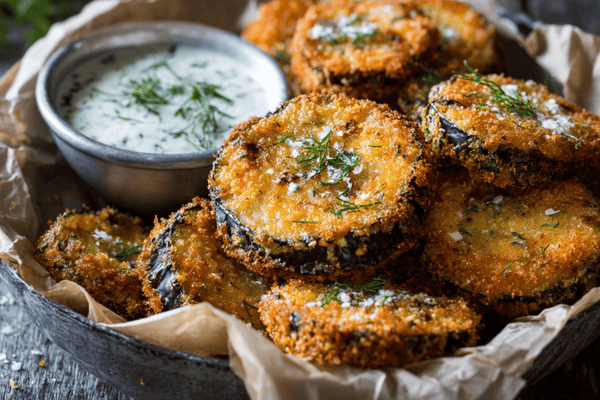
For anyone that works with meat in the kitchen, a good set of butcher knives is essential. However, there are different types and each one is suited to different tasks. If you’re looking to make working with meat as easy as possible, it’s important to choose the right knife for the job.
That’s why, when it comes to deboning meat, you’ll need a boning knife. But did you know that this versatile knife can also be used for things aside from removing meat from the bone?
If you’re keen to learn how to properly use a boning knife, you’re in the right place. This is our ultimate guide to this essential kitchen tool.
Table of contents
What Is a Boning Knife and What Is It Used For?
When it comes to identifying kitchen knives, a boning knife is one of the most recognisable. That’s because of its narrow blade and the fact that it features a finger guard. Boning knives have a flexible blade but there are some out there that are a little more rigid. Which you choose will largely come down to how you’ll use the knife and your personal preference.Normally, a quality boning knife blade will measure between five and seven inches and has a straight edge with a stainless steel, curved blade. The thin blades curve slightly towards the tip and provided they are used correctly, that little finger guard makes it one of the safest knives to use.
Boning Knife Uses
 You’d think, given its name, that the boning knife was good for only one thing. This is a common misconception for this kitchen knife and can actually put some people off buying one or including one in knife sets, as they’ll think that they won’t use it very often.
You’d think, given its name, that the boning knife was good for only one thing. This is a common misconception for this kitchen knife and can actually put some people off buying one or including one in knife sets, as they’ll think that they won’t use it very often.But the opposite is true. You see, the boning knife is a very versatile kitchen knife. It is extremely sharp and as well as removing meat from the bone, it can also be used to remove skin. This would typically be something that you’d use filleting knives for but your boning knife will perform just as well in this situation.
Some people will even go as far as to forgo their paring knife and use their boning knife for cutting their fruits and vegetables thanks to the thin, straight and sharp blade that makes this a cinch. The boning knife is also extremely useful for delicate work. Moreover, if you’re into baking, your boning knife can make a wonderful cookie cutter thanks to that super sharp, pointy tip. Who knew?
Tips On How to Use a Boning Knife
Using any type of knife should be done safely so one of the first things you will need to think about is how you’re going to hold your boning knife. Fortunately, as we mentioned, boning knives have a finger guard (sometimes called a bolster) which prevents the hand from slipping during use.When using a boning knife, you will need a good grip, and hold the knife with your middle finger, ring finger and thumb wrapped around the handle and with the index finger on the top of the blade. Holding the knife in with this comfortable grip allows you both stability and control.
Removing Meat From the Bone
 Learning to use your boning knife requires you to understand the skill behind taking meat off the bone. Of course, you aren’t going to need a degree from a high-quality cooking institute but you will need to master the basics. Here’s a step-by-step guide on how best to tackle this kitchen task.
Learning to use your boning knife requires you to understand the skill behind taking meat off the bone. Of course, you aren’t going to need a degree from a high-quality cooking institute but you will need to master the basics. Here’s a step-by-step guide on how best to tackle this kitchen task.
- Start by choosing a cutting board that is large enough to give you room to work and place your meat down in the centre of the surface.
- Locate the bone within the meat. Sometimes it is blindingly obvious whereas other times you may find that you have to remove some fat in order to see it clearly.
- Use your non-dominant hand to hold the meat in place, keeping it well away from the bone.
- Using the tip of the boning knife, cut along the length of the bone; this will expose the bone from the rest of the meat.
- Now you will need to make a cut along the length of the bone using a sawing motion to fully remove it from the meat. If you find that you struggle, try sliding the blade under the bone at an angle.
- Keeping the meat stable with your non-dominant hand, you’ll now need to scrape the meat away from the bone using the tip of your knife.
- You should now easily be able to remove the bone from the meat et voila, you have a beautiful cut ready for preparation and cooking.
Removing Skin From Fillets
 A boning knife is often used in place of a filleting knife for filleting fish and removing fish skin. When you don’t have access to a filleting knife, this is a great alternative and here’s what you’ll need to do.
A boning knife is often used in place of a filleting knife for filleting fish and removing fish skin. When you don’t have access to a filleting knife, this is a great alternative and here’s what you’ll need to do.
- Place the fish onto your cutting board on its side.
- Hold the fish securely in place using your non-dominant hand.
- With the tip of your boning knife, you will need to make a small incision between the meat and the skin with the sharp tip of the blade, trying to remain as close to the skin as you can.
- Take hold of the flesh and with the knife in the incision, make small sawing cuts.
- It’s important to take your time with this to prevent damage to the flesh so cut slowly and carefully.
Final Thoughts
Despite its name, the boning knife can do much more than removing bones. It is a favourite amongst home cooks as well as the professional chef, as it is an incredibly versatile and extremely durable tool that can be used for far more than just taking meat off the bone. However, if you want to get the most out of the tool then you will need to make sure you are familiar with how to use it.This quick start guide tells you everything you need to know to use a boning knife safely and effectively.


